How to grow black salsify: Mulching
It can be very challenging to grow vegetables when it's hot and dry outside. I try to use mulch as a way to protect my plants in summer. This is how I grow black salsify with the help of mulch.
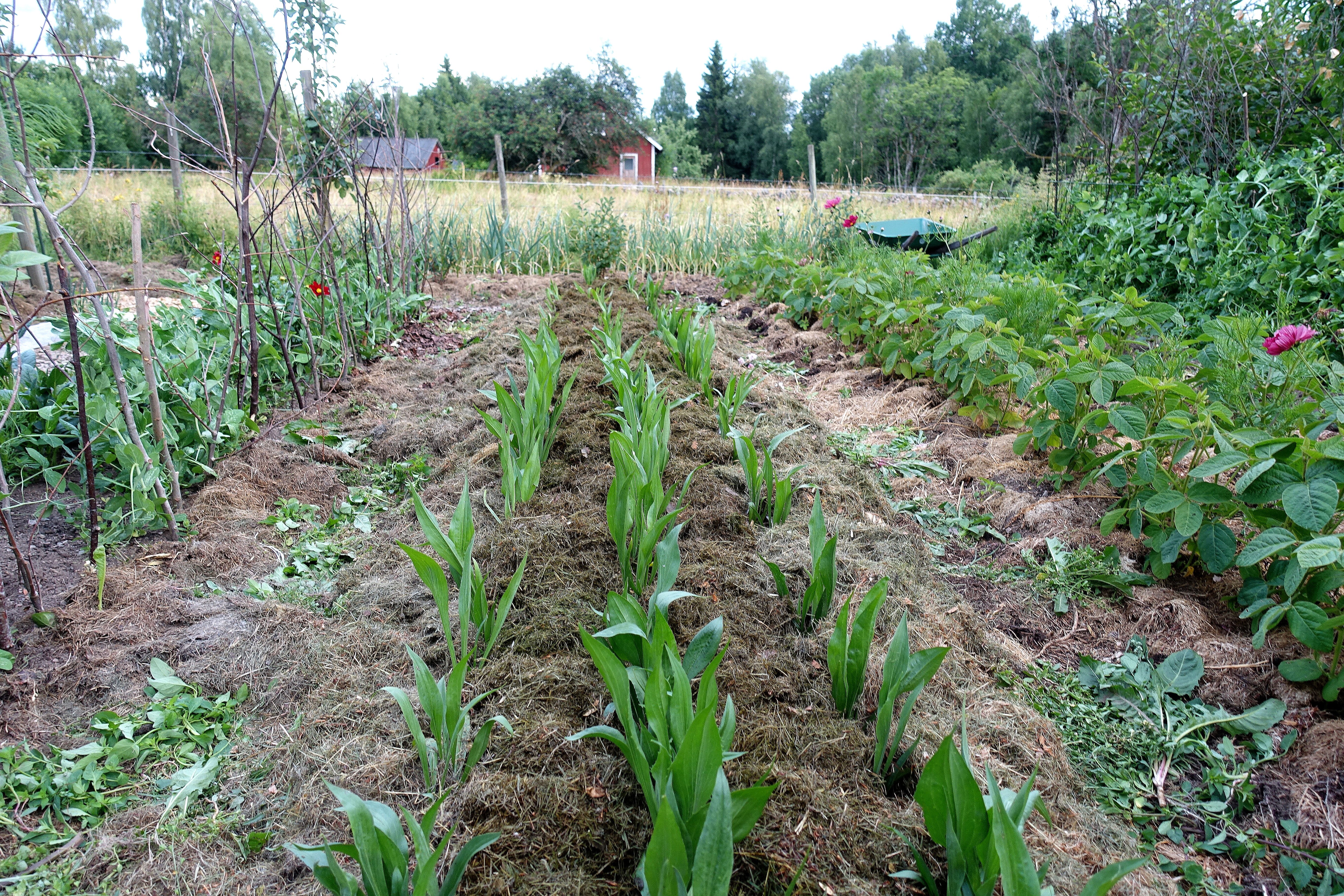
I grow black salsify in my garden and I'm hoping that the mulch will protect it against the drought this summer.
I usually mulch by simply putting the plant parts straight on the soil. This will give the soil all the nutrients it needs when the decomposing process starts. It happens quickly too! They say that grass clippings start to release nutrients as soon as you put it on the soil.
This year has so far been quite challenging for my beds outside. The soil is so dry! We haven't had much rain and I don't want to water too much since I'm afraid that my well will run dry.
Read more about dry summers: Growing vegetables in dry conditions
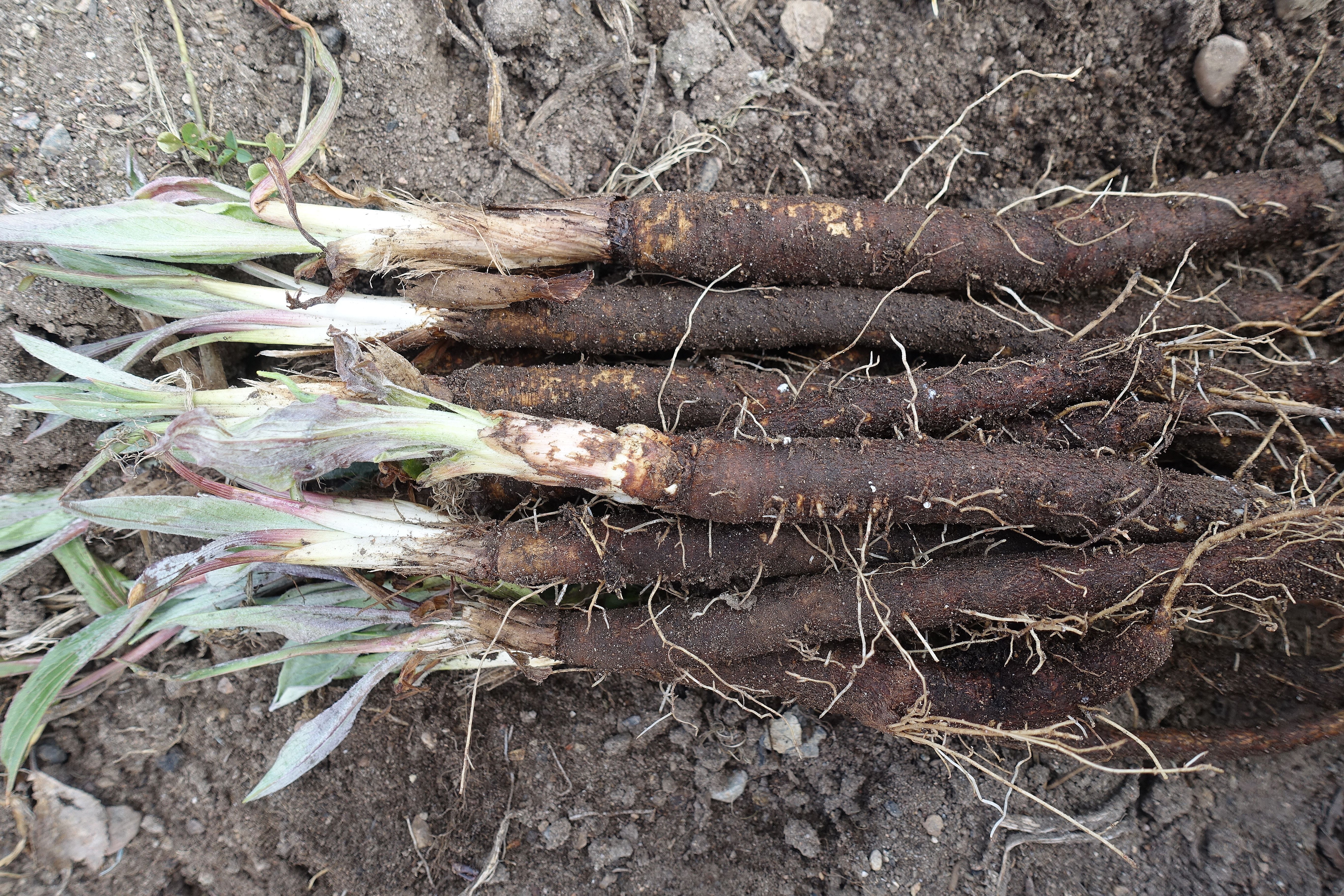
This is what the roots look like, long and black. I mainly harvest black salsify in spring, since I can overwinter the roots.
Grow black salsify with mulch
My mulched beds are by far the best ones in my garden. I decided to help my black salsify out with a thick layer of mulch to survive summer.
I sowed the black salsify in spring, in a 20 ft (around 6 meters) long bed in the legume section in my garden. I made three rows and put the salsify 6 inches (around 15 centimeters) apart.
There are unfortunately a lot of weeds in this bed since I decided to prioritize mulching in other spots earlier this summer. It's really easy to mulch black salsify since they grow in rows, but there's no rush. The roots are quite deep and they can get water further down. That's why I wanted to focus on mulching other areas with more sensitive plants first. But, it's finally time now!
I started by removing weeds like dandelions and chickweed. After that, I watered the bed (a few watering cans.) We won't get much rain in the next few days and whatever we get might not be able to penetrate the thick layer of mulch I'm adding now.
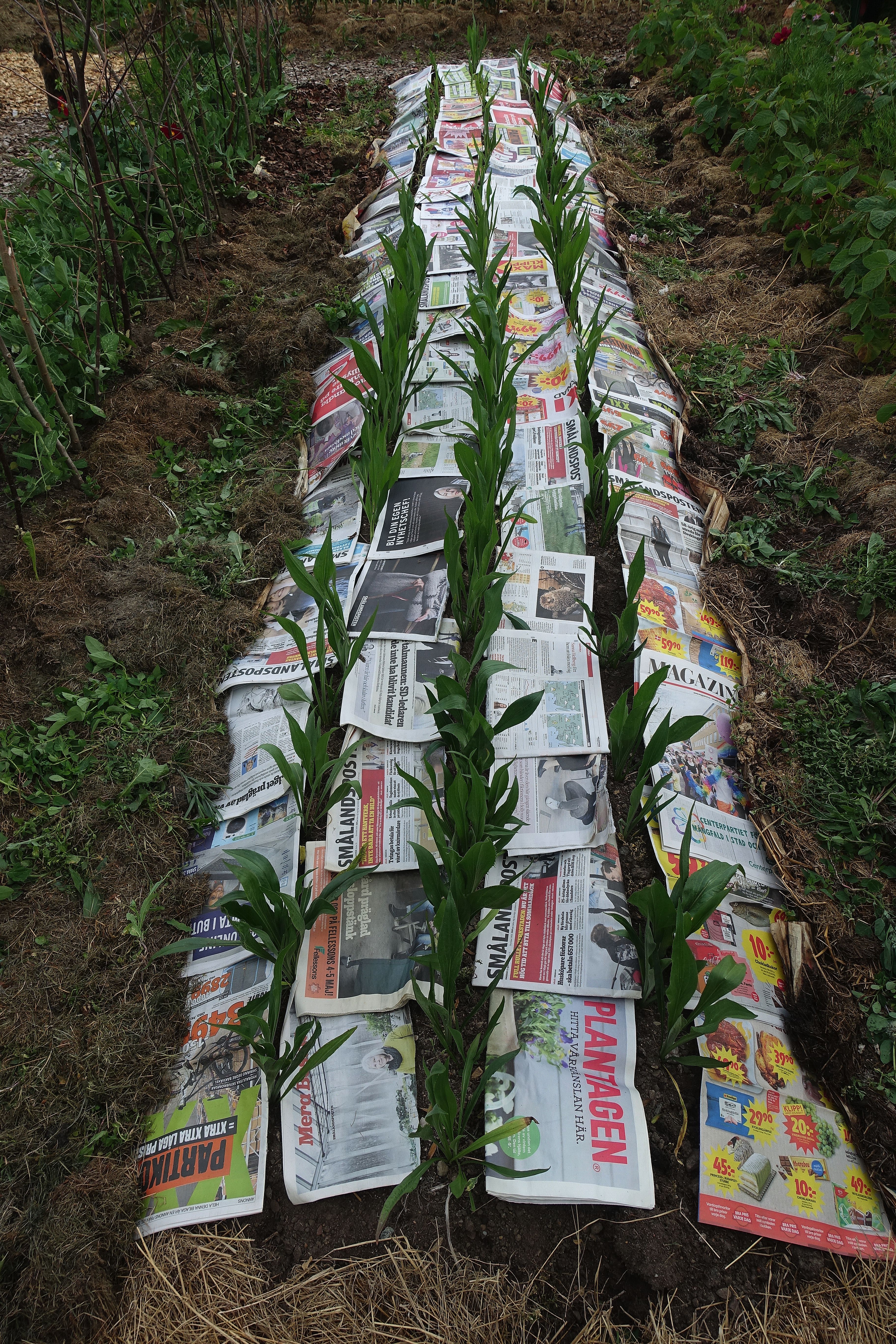
I'm putting newspaper (non-toxic ink) between the rows and the outer edges of the bed when I grow black salsify.
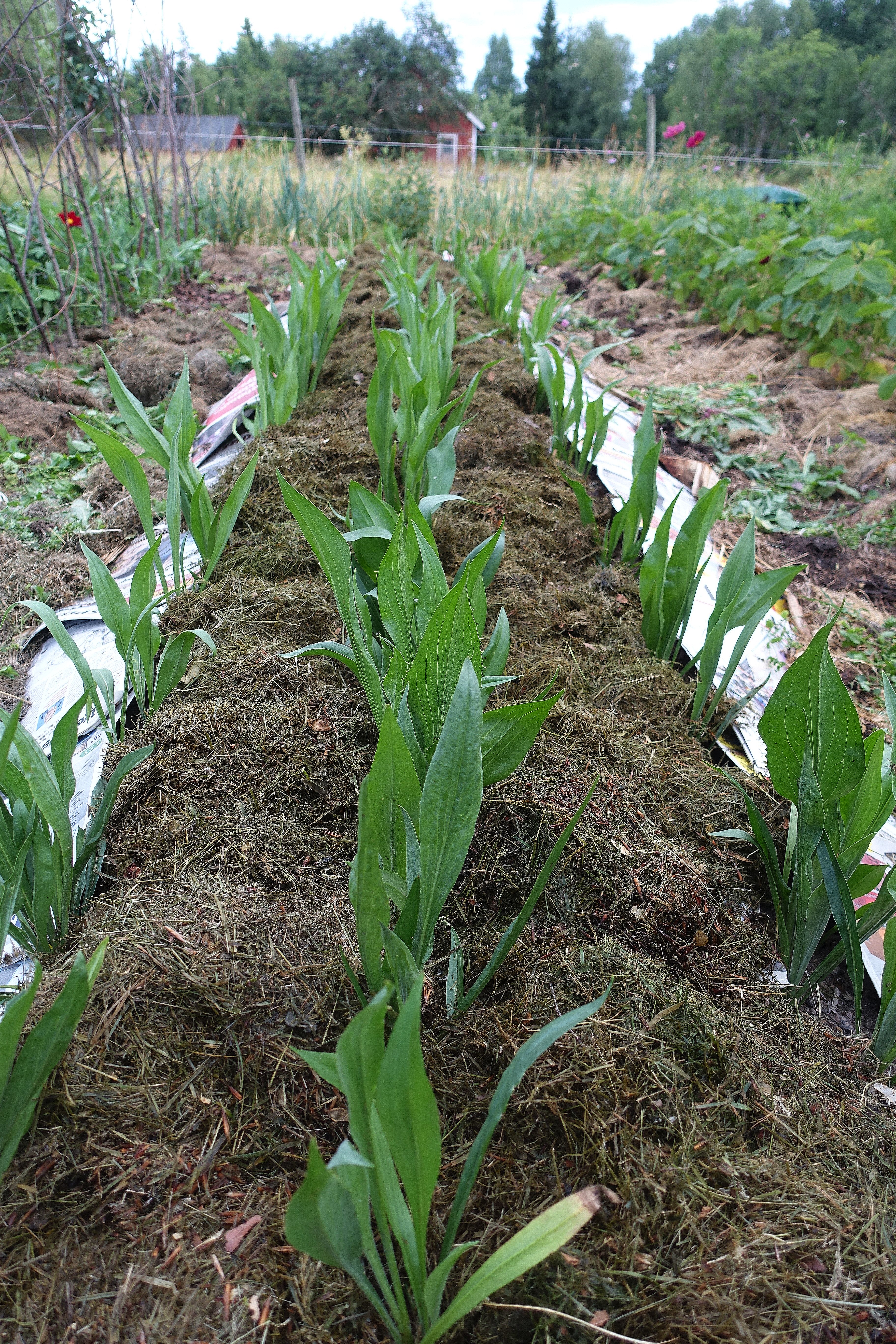
After that, I add large clumps of grass clippings on top of the papers.
The point of adding the newspapers is to get rid of some of the weeds I haven't managed to remove yet. I tear the newspapers in half and put the pieces between the rows of black salsify.
Read more about mulch: Soil analysis, mulching works!
I put newspapers along the edges of the bed and underneath the mulch in the pathways to stop the weeds from growing there. When it's dry, it's important to not let the weeds steal the valuable water that I desperately need for my vegetables.
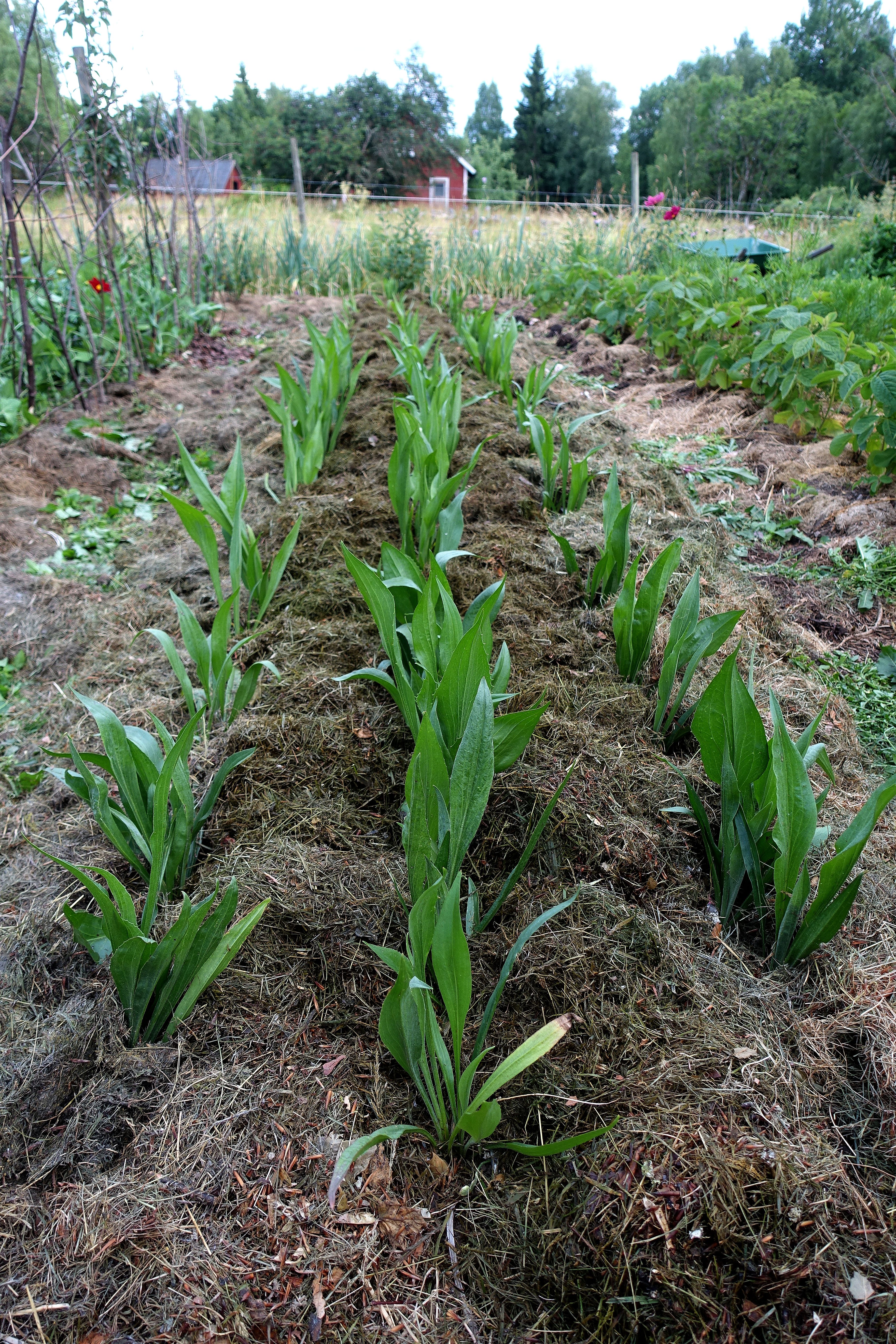
The bed is ready! This is such a great way to make sure that the moist stays in the soil when you grow black salsify, even when it's very hot and dry outside.
I added the grass clippings (that I store in large bags) on top of the newspapers. The layer is around 4-6 inches (10-15 centimeters) thick. I would have liked to water another time to make the grass clippings weigh down on the layer of newspapers, but I don't have enough water.
Don't use too much mulch
It looks really nice! It's going to take a bit longer for the grass clippings to break down now, but the great thing about black salsify is that they don't require that much in terms of nutrients, so this won't affect their growth in the future. The black salsify roots might even start branching out when the soil is very high in nutrients. This will make them basically impossible to peel and you will most likely have to throw it away.
Try my recipe for pan-fried black salsify.
The bed is completely weed-free just a few days after covering it in mulch. The layer of grass clippings has started to dry and my plants look like bright green little spots of color in my rows. I feel like I did my plants a huge favor!
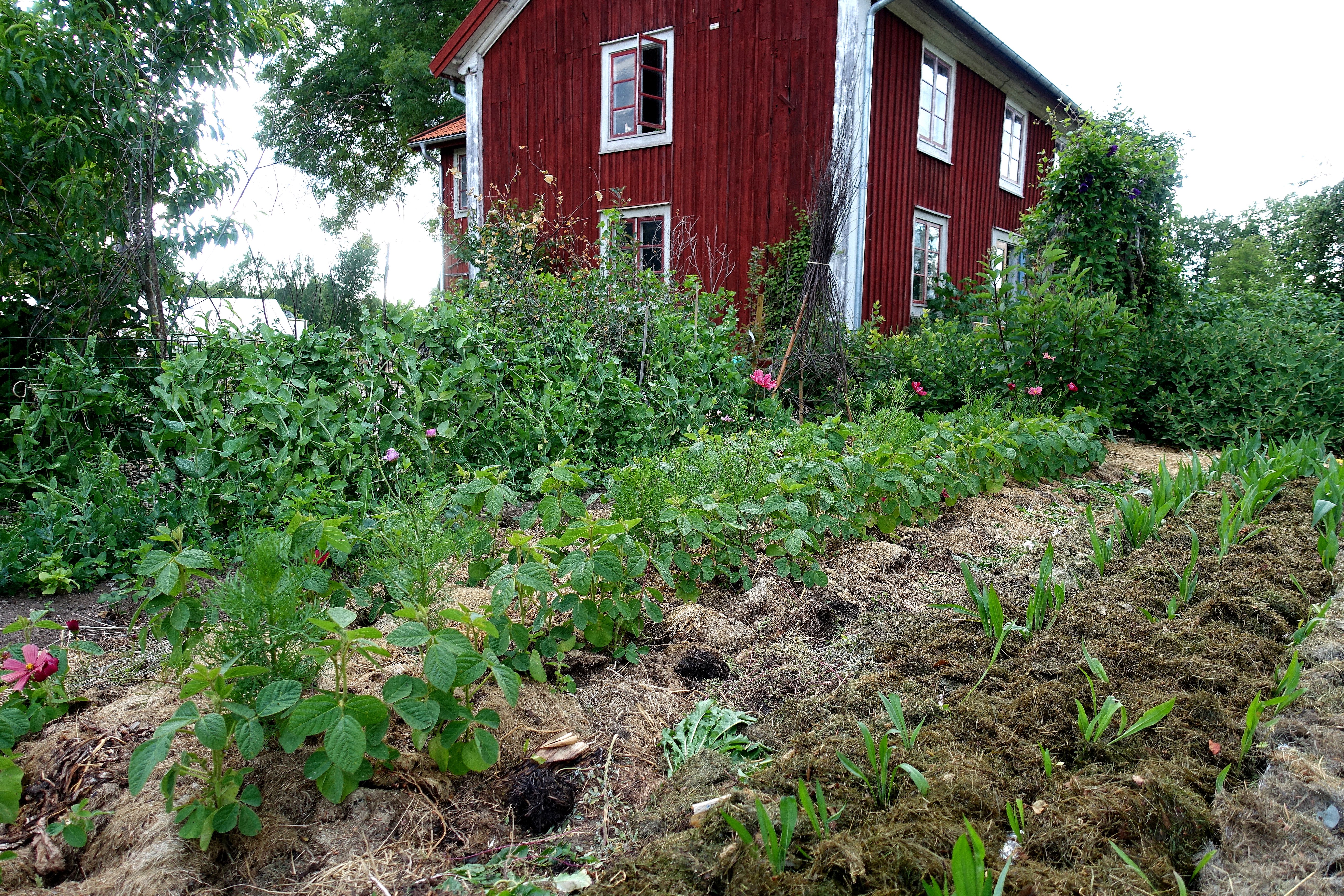
Adding mulch is a great quick fix when you want to grow black salsify. It will get even better if we have a little rain soon.
More about mulch: Mulching raised beds
About newspapers
Some of you might react to the fact that I'm using newspapers in my garden. Well, here in Sweden, our newspapers are made with non-toxic ink that won't do any harm to the soil or the vegetables in it. The paper and the ink do of course contain substances that we shouldn't eat, but the soil will take care of them and process them. Just like some substances in urine that we use to fertilize our gardens.
/Sara Bäckmo



Leave a Reply
You must be logged in to post a comment.